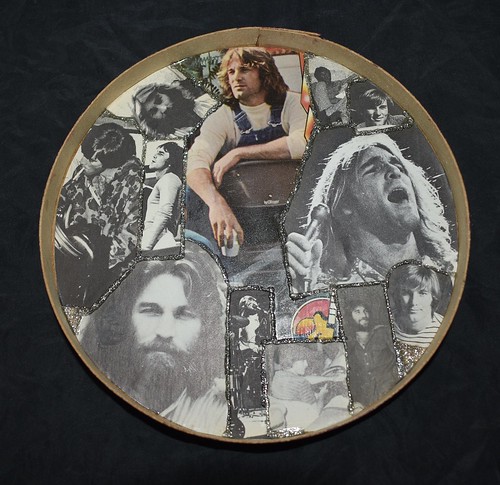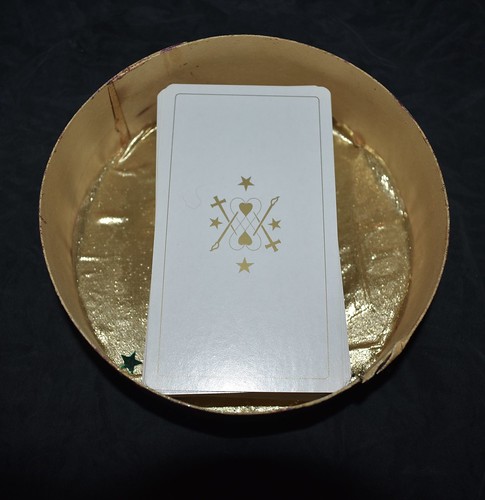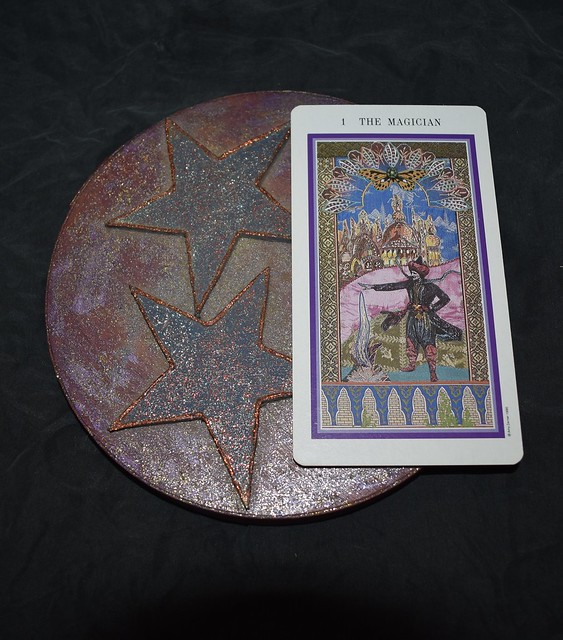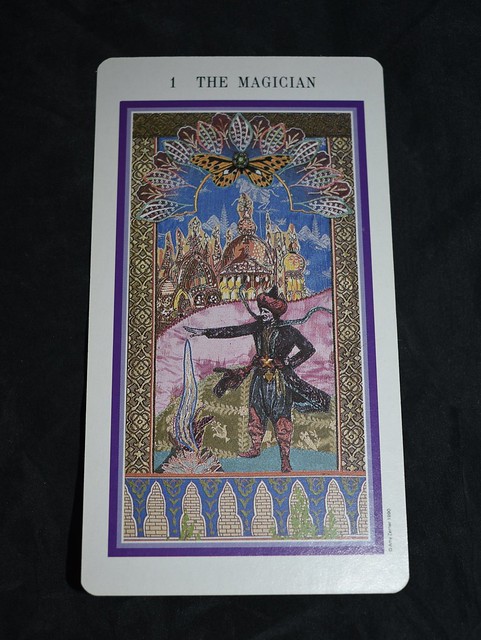I’ve acquired a few new boxes and have been shifting cards around between them all. This is another box designed as a book.

I liked it because it looks like a painting, and the kind of painting I’m drawn to.

It’s now the home of what must be one of my earliest decks, if not the first one I bought. At that time, my friend Princess Patti introduced me to Tarot cards when she did a few readings for me. I liked the way the readings made me think about things, and still see Tarot more as a means for discerning what we want and need, where we are and where we want to be, and how past events have shaped us, much more than as a tool for predicting the future or delving into the intentions of other people, which is how some people use it.
Because of Patti, I also learned that a good card reader helps you avoid the trap of seeing only what you want to see in a reading. Sometimes the hardest cards are the best ones. I’m also a believer that when you want an answer to be YES, but you get a NO, and you immediately reject it, that’s another kind of answer. You intend to do what you want to do, and only time will tell if your instinct served you well.
Ego, will, and desire are strong adversaries to the advice we get from people. Why would advice from cards be any different?

I can’t be sure, but I think the deck Patti used was the Rider Waite Tarot. It’s been around since the early 1900s and is one of the most popular. It is very likely why I bought this one. It’s a reliable deck and one I still enjoy using. It was also the deck used in the book shown below, which helped me learn a lot more about doing readings.

Since I wouldn’t share readings I do for myself, I thought it would be interesting to do one for a character. She’s at a pivotal point in her life in which she is resistant to new relationships. There are three men who might like to change her mind: her estranged husband, a potential creative partner, and a new friend.
I decided to pull three cards, and let each card represent one of the men in the order above. I’ll put more behind the cut, if you’re interested. I’m relying heavily on the little book that came with the cards for descriptions of the cards themselves.



 I’ve been feeling a little “off” this week: tired, mild recurring sinus headaches, aching gums. I think this is due to seasonal allergies and weather shifts. No big deal. It isn’t great for writing, but my mind is TEEMING with ideas that I will write. It’s messed with my sleep a little and consequently led to a few strange and disturbing dreams, but also, I’ve dreamed this week about John Hamm, and he was really nice to me. I’ll never disregard a handsome man who’s courteous; he likely represents a minor fictional character who has me preoccupied even if I’m not writing him at this time.
I’ve been feeling a little “off” this week: tired, mild recurring sinus headaches, aching gums. I think this is due to seasonal allergies and weather shifts. No big deal. It isn’t great for writing, but my mind is TEEMING with ideas that I will write. It’s messed with my sleep a little and consequently led to a few strange and disturbing dreams, but also, I’ve dreamed this week about John Hamm, and he was really nice to me. I’ll never disregard a handsome man who’s courteous; he likely represents a minor fictional character who has me preoccupied even if I’m not writing him at this time.





















